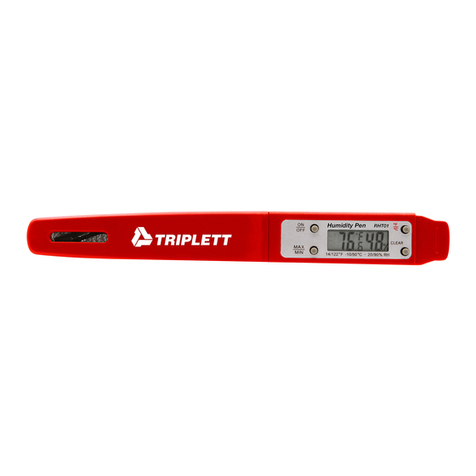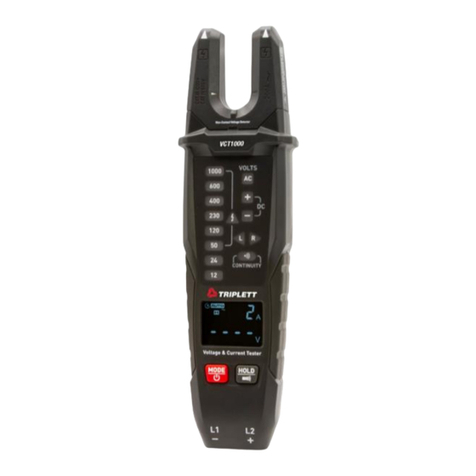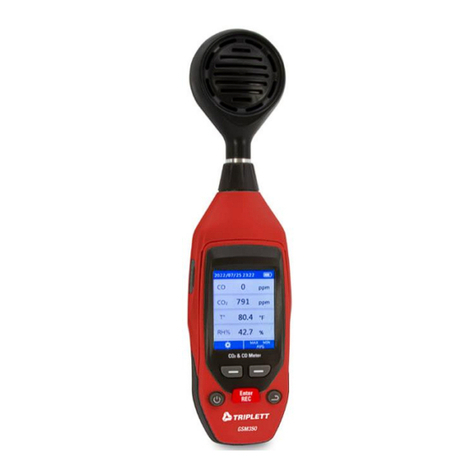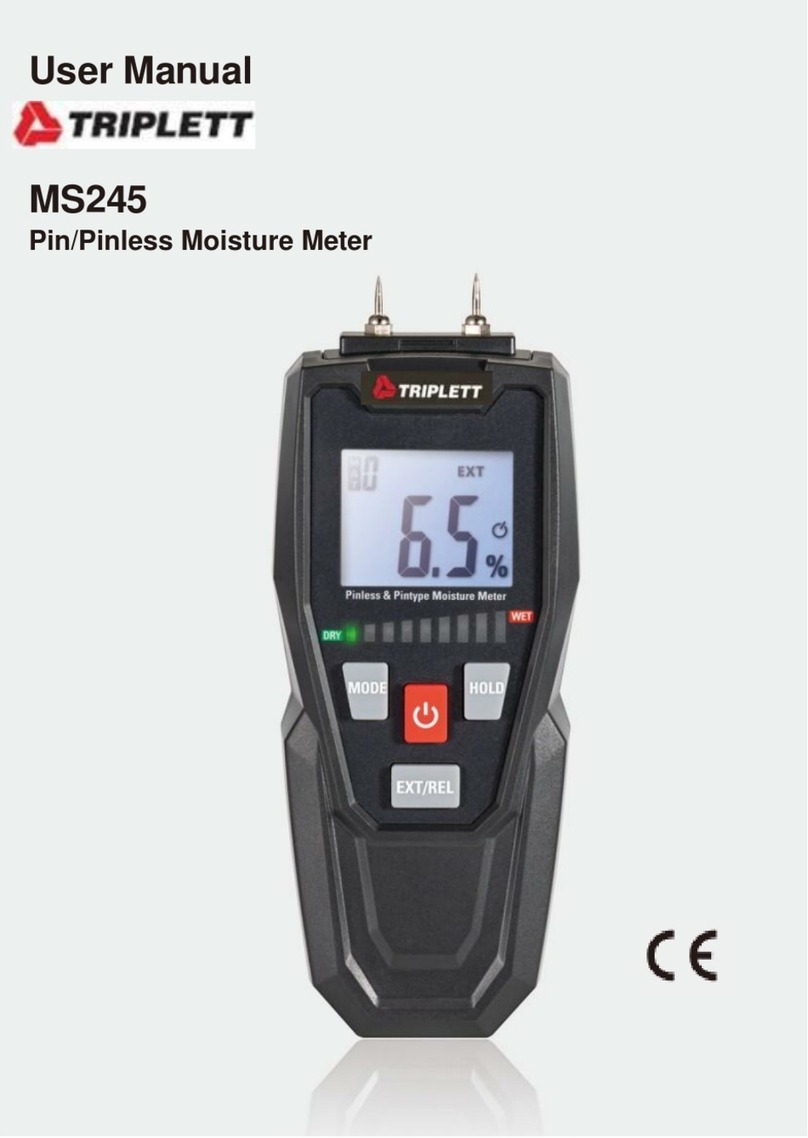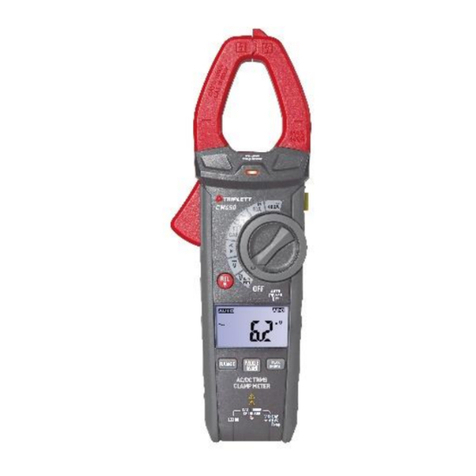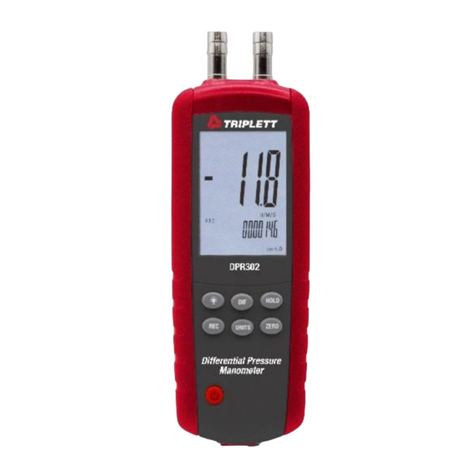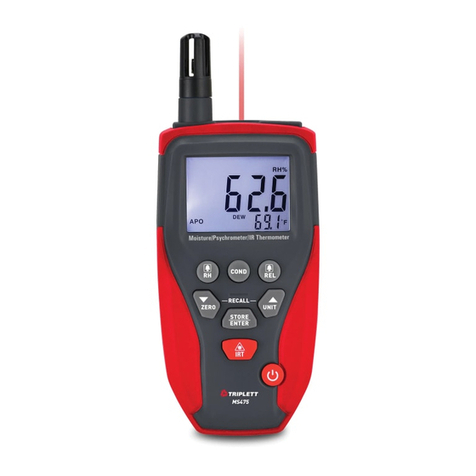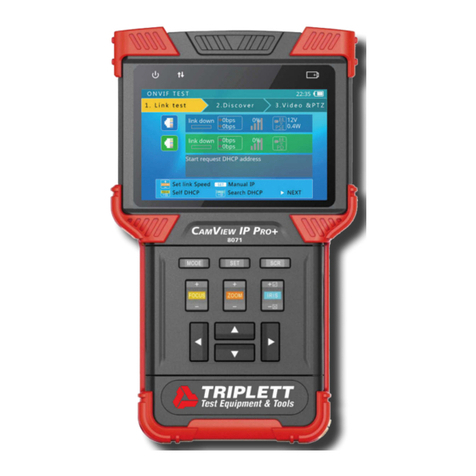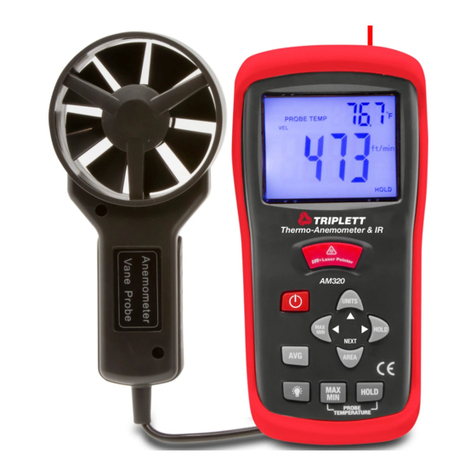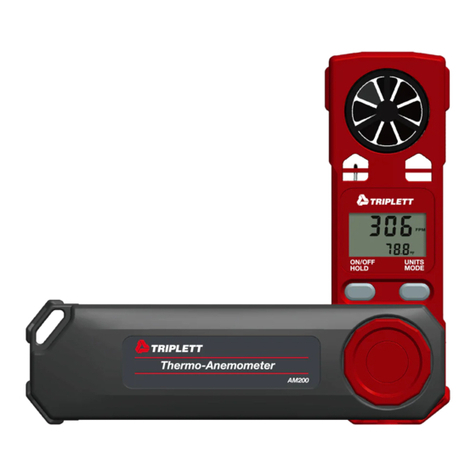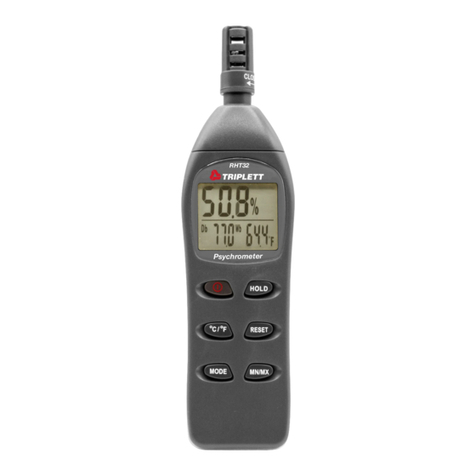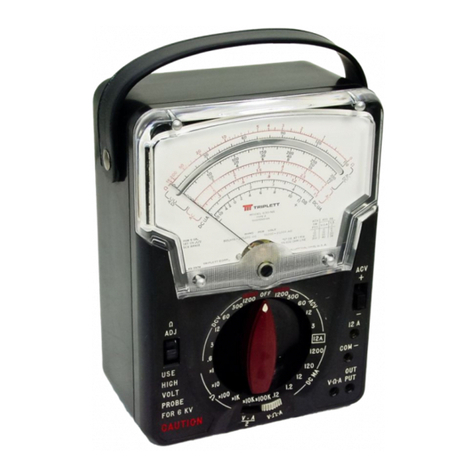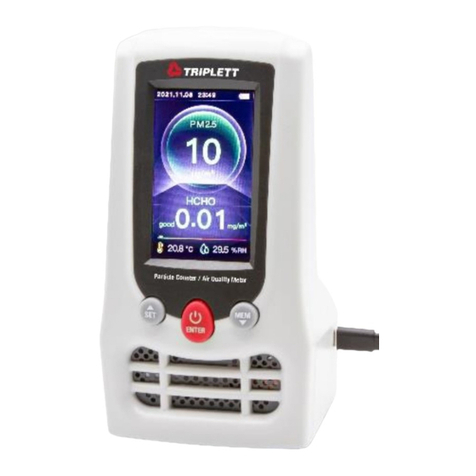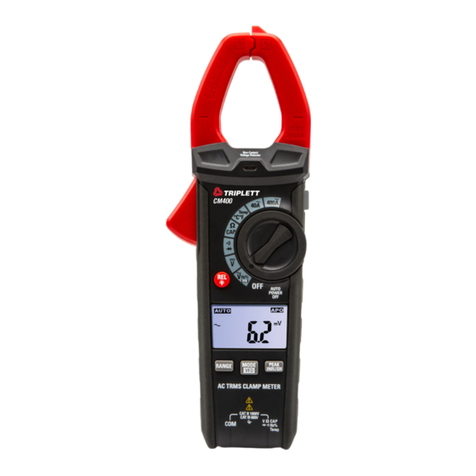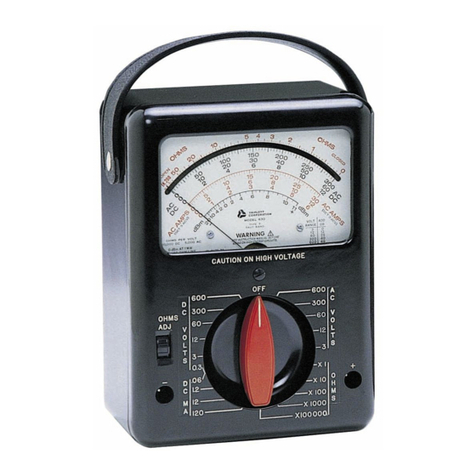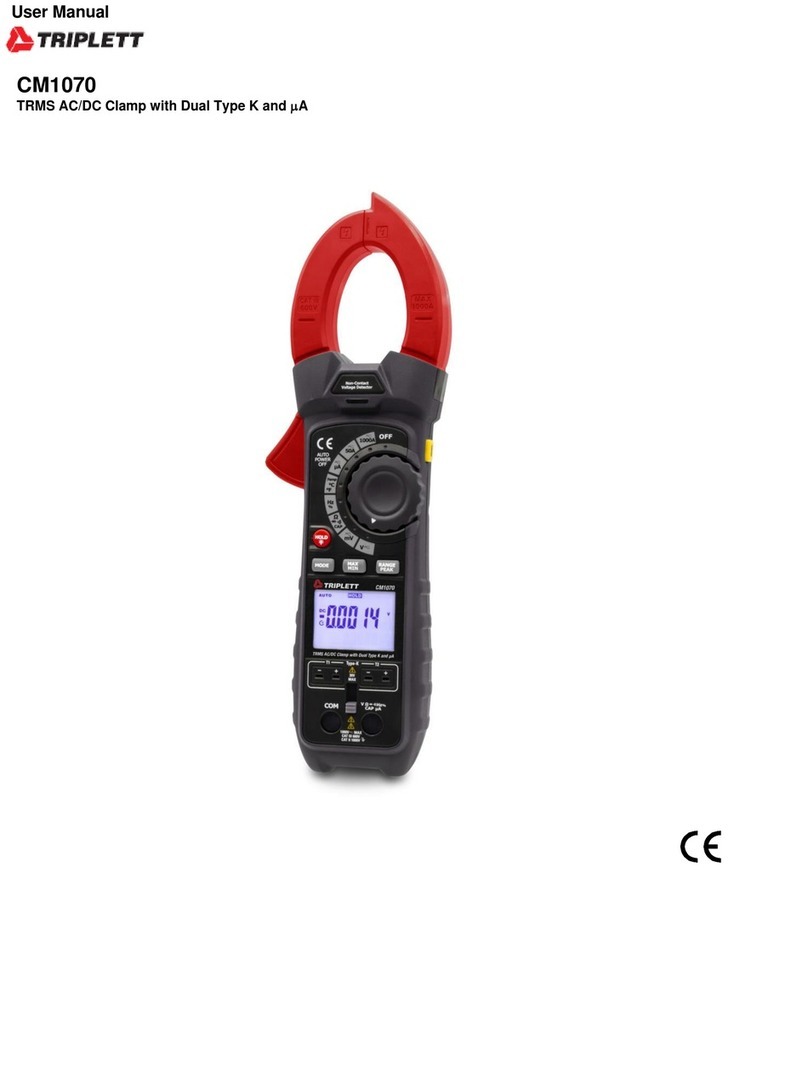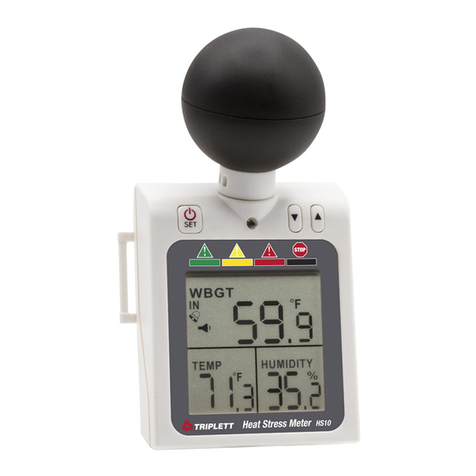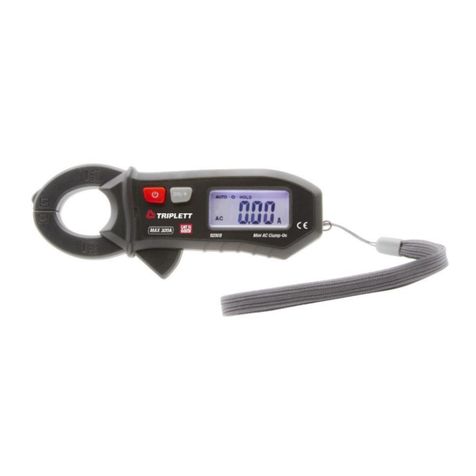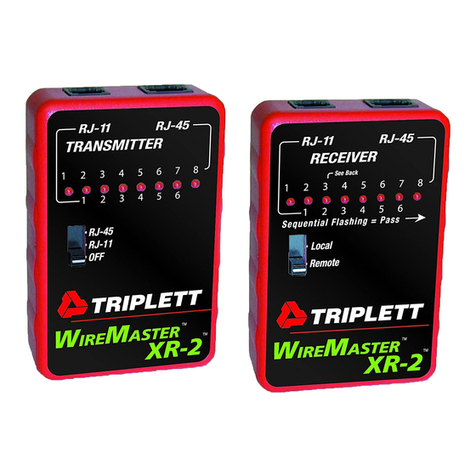
Note: blinking numbers mean you are seeing real-time measurements. Non-
blinking mean the reading has been ‘locked in ’.Press ENTER button to unlock
and take a new reading.
(2). Wet the thermocouple A wet sock thermocouple and clip both
thermocouples (thermocouple A and thermocouple B) in front of the evaporator.
(3). Plug the thermocouple A into the top of the meter.
Note: If “OL” is displayed, then the measurements are out of range. Retake
the temperature measurements and ensure the temperature inputs are correct.
(4). Press “SENSOR”button until WB is displayed. Press and holding
“SENSOR” button until T/C is displayed. When reading is stable, press ENTER
button.
(5). Unplug the thermocouple A and plug in the thermocouple B.
(6).Press “SENSOR”button until DB is displayed. Press and holding
“SENSOR” button until T/C is displayed. When reading is stable, press ENTER
button
(7).Press OUTPUT button and read Target Evaporator Exit Temperature.
Note: If “OL” is displayed, then the measurements are out of range. Retake
the temperature measurements and ensure the temperature inputs are correct.
(8). Compare Target Evaporator Exit Temperature to Actual Evaporator Exit
Temperature. The Actual Evaporator Exit Temperature is the measured
temperature of the air after it has passed through the evaporator.
(9). Adjust airflow accordingly. An Actual Evaporator Exit Temperature. That
is below the Target Evaporator Exit Temperature. Is indicating a low airflow.
Increasing airflow can be accomplished by eliminating restrictions in the duct
system, increasing blower speed, cleaning filters or opening registers. An Actual
Evaporator Exit Temperature that is above the Evaporator Exit Temperature
.usually indicates low capacity. Occasionally airflow is higher than expected.
Look for causes of low capacity such as refrigerant mischarge or a dirty
condenser coil. If the airflow is high, correct it by lowering the fan speed.
Note: If “OL” is displayed, then the measurements are out of range. Retake
the temperature measurements and ensure the temperature inputs are correct.
IMPORTANT TO NOTE::
Because everything within the system is interdependent, one adjustment can
affect other parts of the system. For example, increasing airflow increases the
superheat, which may require adding refrigerant. After any modifications, allow
15 minutes to stabilize and then retest. For the best results take measurements
right after each other.
